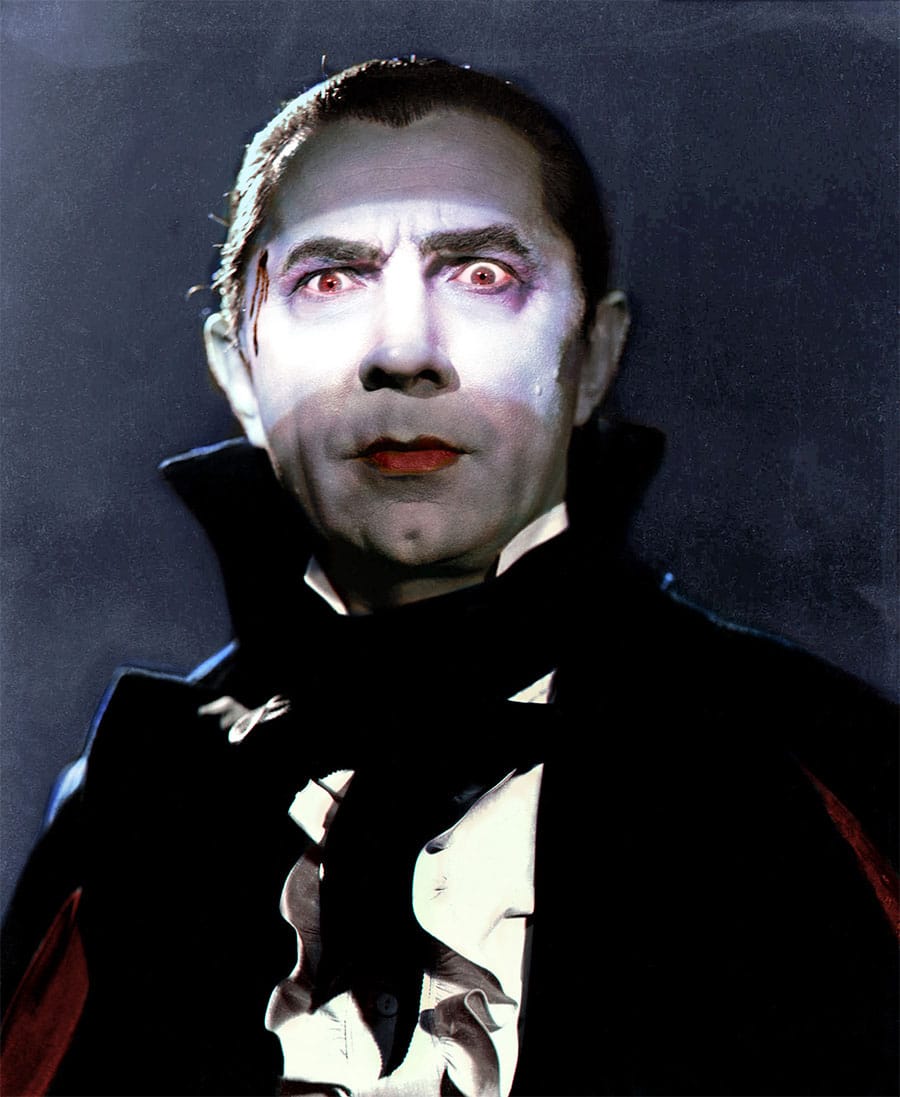London Calling has once again called on our friend COLIN BAINBRIDGE for this month’s selection of unusual tales from the UK capital.
By 1950, Bela Lugosi, the star of countless horror films, realised that his career was winding down.
From the early 1930s to the late ‘40s, he had been one of Hollywood’s highest-paid stars. Although he played many different roles, it was his role as Dracula he was most famous for.
However, in the 20 years that had elapsed from his first appearance as the Count in 1931, the world had changed. After the horrors of the second world war, the public had become less interested in old-world monsters. The roles he was now being offered were bit parts and B movies.
He wanted the taste of stardom again and so, when a stage play of him playing Count Dracula once again was offered, he couldn’t refuse it. It meant he had to travel to England and so, on April 3, 1951, Lugosi and his wife Lillian set sail on the SS Mauritania, arriving at Southampton on April 10.
The bright lights of London’s West End beckoned. Only it wasn’t as simple as that. As was the routine at the time, plays had to prove their popularity by touring before a West End gig could be secured.
Rehearsals began in a room above a pub in Pont Street, South Kensington, on April 16. However, due to a double booking by the local taxidermy group, on April 23 the troupe continued at the Duke of York theatre in the West End. Unfortunately, that would be the closest to a West End performance they would get.
There then commenced a gruelling national tour starting at Brighton, then on to Lewisham Hippodrome, Golders Green, Streatham Hill and beyond. Lugosi played 12 performances at the Empire Theatre, Shepherd’s Bush alone.
Due to the somewhat meagre wage Lugosi was on, he decided to take on several promotional jobs along the way. He did a billboard advertising campaign for a fledgling Berni Inn steak house chain. He was even hired by a London dentist for a photo shoot.
According to accounts, Lugosi and his wife arrived at the location, which was Highgate Cemetery, half an hour before the photographer. Lugosi was in full vampire costume and apparently gave quite a scare to several members of the public and caused one old lady to faint who was then given smelling salts by his wife Lillian.
The tour then expanded to other cities up and down the country. Up to Glasgow and down to Manchester. Up to Middlesbrough, Sheffield, Leicester down to Portsmouth, and back to London. There is a popular myth that these vampire shows were unsuccessful and that audiences mocked the rubber bats and sometimes less-than-perfect performances, but Lugosi was filling venues, sometimes up to eight to 12 nights in a row.
The number of performances and constant touring were beginning to take their toll on the 69-year-old actor, though. Lugosi was taking morphine nightly and was starting to miss his cues and was forgetting or mixing up his lines. After 20 weeks of what was supposed to be a six-week tour and 229 performances, and with no West End shows forthcoming, the Hungarian actor decided he had had enough. He said to his producer: “John, I can’t go on. It’s taking too much out of me. Please finish it quickly.”
Even then, before he returned to America, he accepted a part in one of the ‘Old Mother Riley’ film series, ‘Mother Riley meets the Vampire’. A month later, Lugosi and his wife were back in New York where he died five years later and was famously buried in his Dracula cape.
The Breakfast Cereal Riot
In 2015, the grim spectre of civil unrest and mob rule erupted on a street in East London. A 200-plus strong angry mob, complete with torches and wearing pigs’ heads, were venting their anger at a single shop. So, what heinous activity were the owners involved in to warrant such an explosion of vitriol?
The shop was the Cereal Killer Cafe and it sold breakfast cereal. It was opened in 2014 by twin brothers Alan and Keith Keery, who believed they had a unique business plan to sell ordinary breakfast cereal for between £3 and £4.40 a bowl from a cafe in Shoreditch.
From the beginning, they drew criticism from anti-gentrification protesters; they were even abused and called ‘hipsters’ online, but nothing could have prepared them for what was to come. On September 26, 2015, a large angry mob made up of several groups, including Class War, descended on the shop. On their website, they said they were coming together to “stop communities being ripped apart by Russian oligarchs, Saudi sheiks and home-grown Eton toffs … we don’t want pop-up gin bars, we want community”.
The Keerys, who weren’t in the shop at the time, received a phone call from the manager who said: “There is an angry mob outside with flaming torches, pitch forks and pig masks.” Terrified cafe staff and customers had to flee the shop, which was daubed with paint and graffiti, and take shelter in the chocolate shop next door. Fortunately, no-one was hurt, although the shop was damaged and cereal was thrown.
Investigations into who were involved in the attack revealed that, in addition to Class War, there was an odd mix of groups. Anarchists and anti-capitalists were no surprise, but there were the East End Crusties (EEC) and even a group angry that the shop didn’t have any ‘Krave” (which it actually did have). The British Breakfast Club (BBC) were there complaining about the high number of American cereals.
The shop was back open the following day and carried on trading until Covid restrictions took their toll and they finally closed on July 8, 2020. They have other shops elsewhere including Dubai and Jordan.
Death at The Empire
Subliminal cuts are rumoured to have first been inserted into certain films from the 1950s. A subliminal cut is where an image of just one frame is spliced into a film. The ‘flash’ is so quick you can’t be sure if you’ve actually seen it. You might think you have seen an image, but you can’t be sure – it’s just enough to distress and unnerve you.
The practice is now illegal, but certain films between the 1950s to the 1980s are rumoured to have had such images. The most famous being ‘The Exorcist’ in 1974. A disturbing demon known as ‘Captain Howdy’ can be seen for one eighth of a second during a dream sequence featuring Father Karras at 45 minutes and one second into the film. It is so quick the image is barely perceptible.
For years, director William Freidkin cheekily denied it even existed. It was only with the advent of home video players that people were able to freeze frame and see it in all its chilling detail.
When the film opened in London at the Empire cinema in 1974, a man famously died at a showing in the first week. The medical report found that he had a weak heart and had suffered a heart attack. Many believed the demon known as Captain Howdy had shocked him to death.
The event was fantastic publicity for the film, albeit a bit morbid, and became just one of the unsettling stories that have surrounded the film over the years.
London Calling’s regular columnist Richard Lamberth is away this week.




















